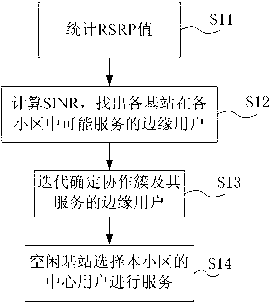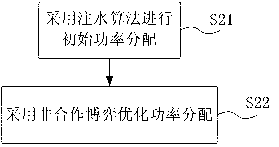Method for achieving collaborative multipoint transmission dispatch and power distribution
A multi-point transmission and transmission scheduling technology, which is applied in power management, wireless communication, electrical components, etc., can solve the problems that fairness cannot be guaranteed, the optimal throughput of the system cannot be guaranteed, and static cooperation cannot adapt to dynamic changes. , to achieve the effects of reasonable power allocation, strong real-time performance, and small algorithm delay overhead
- Summary
- Abstract
- Description
- Claims
- Application Information
AI Technical Summary
Problems solved by technology
Method used
Image
Examples
Embodiment Construction
[0049] The technical solution of the present invention will be further described in detail below in conjunction with the accompanying drawings, but the protection scope of the present invention is not limited to the following description.
[0050] For each PRB, the transmission scheduling algorithm is used to determine the cooperative cluster and scheduled users, and the water filling algorithm is used for each base station to pre-allocate power, and then non-cooperative game is used for interference coordination on each PRB to achieve optimal power allocation . The present invention adopts joint transmission / processing technology, and a plurality of cooperative base stations jointly preprocesses user data to eliminate interference between base stations. The base stations in the cooperative cluster not only need to share channel information, but also need to share user data information. Users are jointly served by multiple coordinated base stations. Inter-user interference is...
PUM
 Login to View More
Login to View More Abstract
Description
Claims
Application Information
 Login to View More
Login to View More - R&D
- Intellectual Property
- Life Sciences
- Materials
- Tech Scout
- Unparalleled Data Quality
- Higher Quality Content
- 60% Fewer Hallucinations
Browse by: Latest US Patents, China's latest patents, Technical Efficacy Thesaurus, Application Domain, Technology Topic, Popular Technical Reports.
© 2025 PatSnap. All rights reserved.Legal|Privacy policy|Modern Slavery Act Transparency Statement|Sitemap|About US| Contact US: help@patsnap.com



